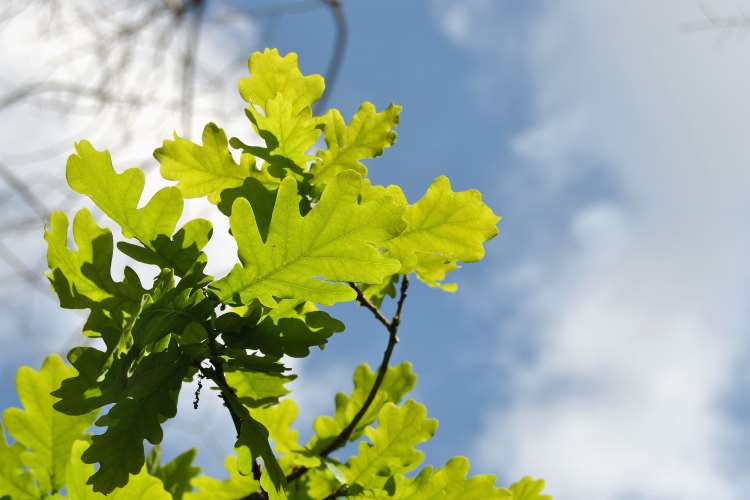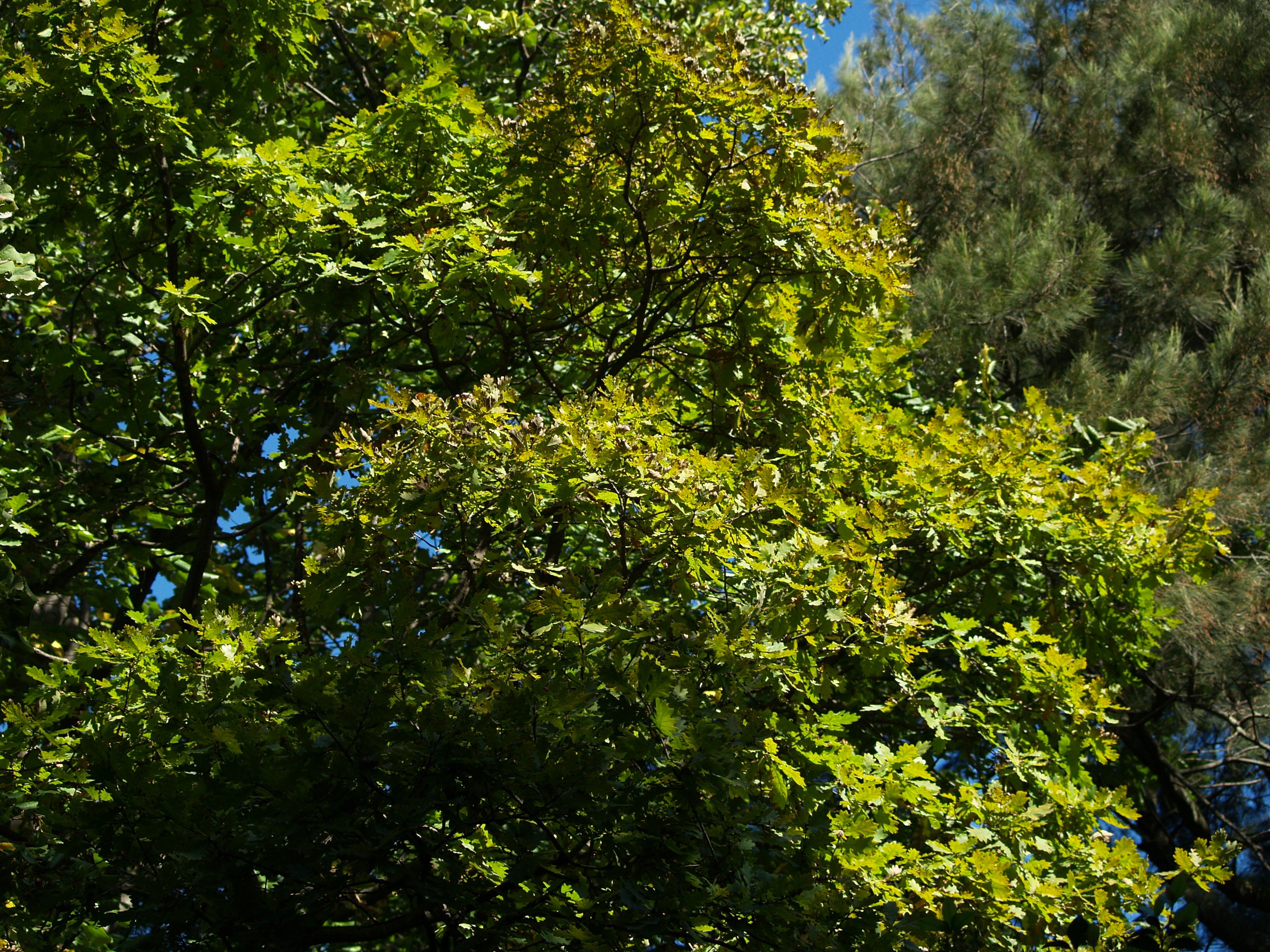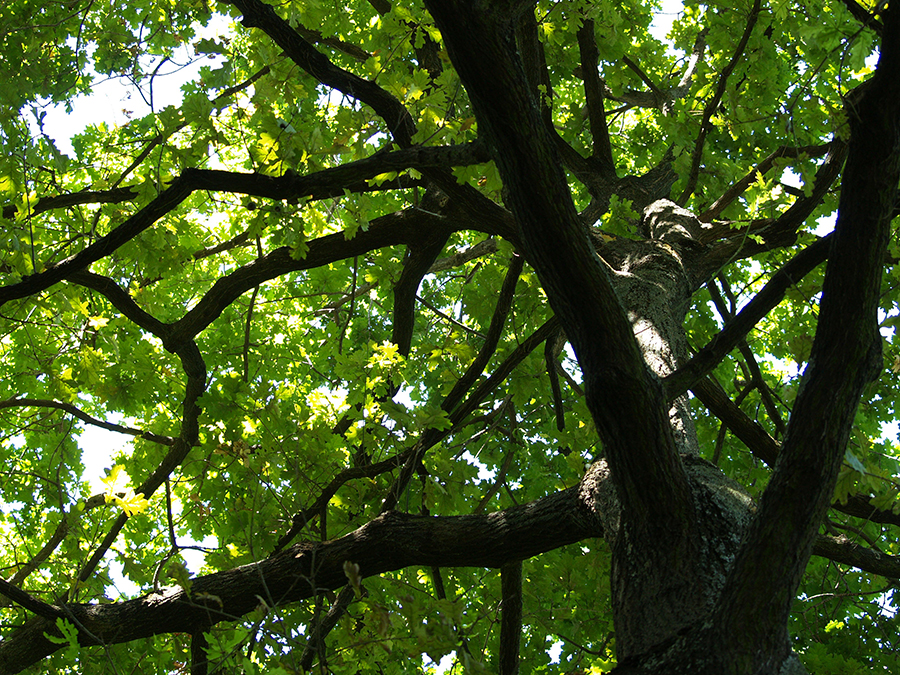
Common Oak
Quercus robur
Family and description
From the Quercus genus and Fagaceae family, the Common oak is a deciduous tree, which can reach a height of 30-40 meters.
This tree has many branches. Its bark is smooth when young, becoming thick and clefted with age.
The pivotal root system forms very deep secondary roots that give it great resistance to wind.
Flowering occurs between April and May, with females and males flowering at different times, in order to avoid self-fertilization, since the species is monoecious. The male flowers, catkins, are filiform whilst the female ones are small and round.
Its fruit, the acorn, matures between September and October. This tree only begins to produce high quality fruit in abundance at 60 years of age.
Origin and habitat
Originally native of Europe and very characteristic of the Portuguese flora, the Common oak is one of the species with the greatest natural expansion area in the European continent and one example of Portuguese secular vegetation. Its habitat is temperate forests with Atlantic climate influence.
The oak forests of the Common oak are among the ecosystems whose fauna richness is the highest in continental Portugal, being of great importance in the conservation of nature. It is an important source of food and houses a large diversity of plants and animals.
It is one of the native oaks species with greatest longevity and an excellent soil creator. Regarding environmental conditions, the Common oak grows mainly at low altitudes but may occur at altitudes of up to 1,000 m. It prefers fresh, deep and fertile soils, especially if siliceous, not tolerating calcareous soils. It enjoys humid, oceanic climates,
needing a lot of water in the soil. It is intolerant to intense cold or frost. It occurs in mixed deciduous forests, but can also form forests where it is the main species.
Uses and curiosities
The oak-galls that are formed on branches are structures designed to defend the tree against plant invaders, produced in response to egg laying by small wasps, flies, beetles or mites.
Acorns were an important food source before the period of the Portuguese Discoveries and the populations of this extreme western part of Europe, who did not know wheat, used to eat acorn bread. The acorn also has medicinal applications.
Robur was the term used for wood of great hardness and solidity. The wood of this kind of oak, besides being hard, has a fine grain and presents visible growth rings. It is very resistant, having been used extensively in the construction of medieval buildings and shipbuilding. It is considered the most valuable hardwood in Europe. All these characteristics led to a high demand and preference of Europeans for this wood, which largely contributed to the disappearance of vast areas of this oak tree in Europe.


